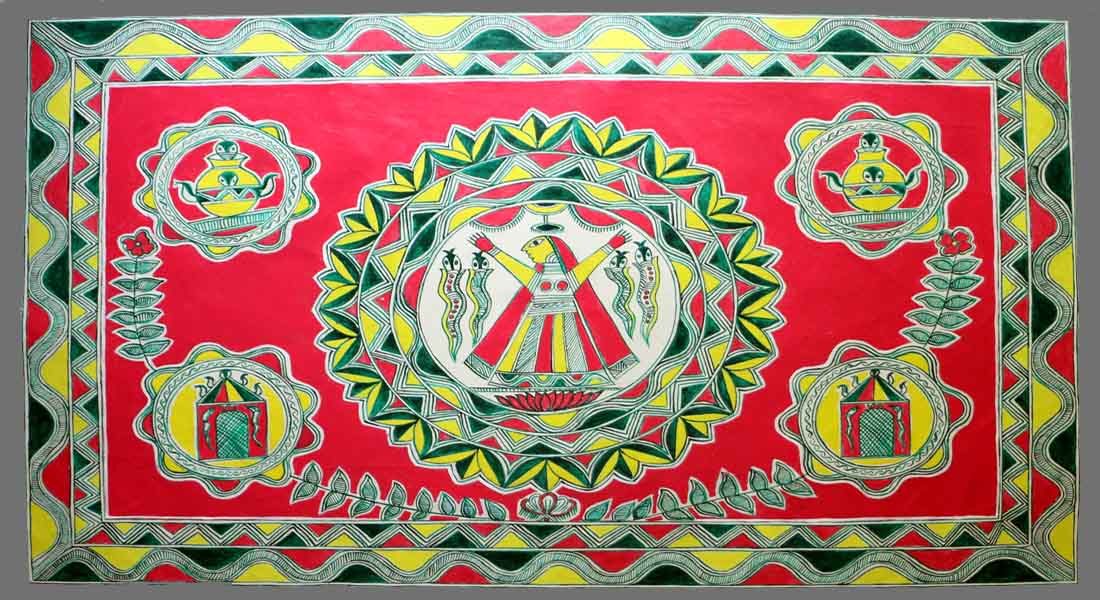Manjusha art is believed to be the only art form in the history of the art forms in India which has a sequential representation of the story and is displayed in a series. This is also called a scroll painting. Manjusha art is a folk art of Bhagalpur, Bihar, and has been dated back to the 7th century. The name Manjusha is also associated with an elaborate story, a goddess and also a festival celebrated in Bhagalpur.
The Sanskrit word “Manjusha” means a box and Manjushas are temple shaped boxes, made of bamboo, Jute-Straw, and Paper inside which the devotees keep their ceremonial materials. These boxes are however illustrated with paintings that tell a tale. The tale is that of Bihula who saved her husband from the deity’s wrath and a snake-bite and also of Bishahari or Mansa, the snake goddess known for her anger when displeased but also her fierce protectiveness when propitiated. Earlier the story called `Bihula-Bishahari Gatha’ had an oral tradition of being sung though, nowadays not too many people sing it, but in Assam and Bengal the tradition is still continued and the songs are sung with the story of Bihula.
It is well-known folk art. In an attempt to save this art form from extinction, in the year 1984, the Bihar government made an initiative called “Jansampoorna vibagh” in which they went to the villages of Bhagalpur and showed them slideshows of Manjusa art and educated people about this traditional art form encouraging them to revive this age-old tradition.
This initiative has led to other governmental and non-governmental organizations to come up with unique plans to promote this art form by using them as a mode of communication in various schemes.
—
—
Folkartopedia welcomes your support, suggestions and feedback.
If you find any factual mistake, please report to us with a genuine correction. Thank you.

